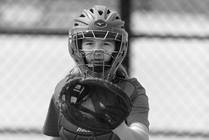Search Results
Viewing: 391-400 of 1460 | All
Scaphoid Fractures
The wrist is made up of eight bones. The wrist bone below the base of the thumb is known as the scaphoid bone. A fracture (break) of this bone can happen when a person falls onto the outstretched hand.

Condition
Sports Medicine: Low Back Strain/Sprain
The low back is a complex structure of bone and muscle that is supported by cartilage, tendons, ligaments, and fed by a network of blood vessels and nerves. Certain motions, such as bending, twisting or lifting, can sometimes lead to a low back strain or sprain.
Article
Cleft Lip Repair
Your baby's cleft lip has been repaired. There are a few things to know about his or her care at home.
Article
Medicine: How to Give by Mouth
Here are some suggestions and safety tips that may make giving medicine easier for both you and your child.
Volar Plate Injuries
The volar plate is a thick ligament that connects two bones in the finger. A volar plate injury is commonly called a jammed finger or sprain. This happens when the finger is bent backward too far (hyperextended). These injuries can also lead to a fracture (break) called an avulsion fracture.
Article
Safe Storage
Lockboxes can be used to safely store dangerous items like guns (firearms) and medicines.
Article
Microarray Analysis Test
The microarray analysis test is used to find out if your child has a medical condition caused by a missing or extra piece of chromosome material. This test is also known by several other names, such as chromosomal microarray, whole genome microarray, array comparative genomic hybridization or SNP microarray.
Lyme Disease
Lyme disease is spread to humans through the bite of infected ticks. Symptoms of Lyme disease include fever, swollen lymph nodes, headache, stiff neck, tiredness, swelling of large joints and red rash that often has a “bulls-eye” appearance.
Article
Continuous Renal Replacement Therapy (CRRT)
Continuous Renal Replacement Therapy (CRRT) is a 24-hour non-stop dialysis therapy used to support patients with renal (kidney) failure.
Article
Intrauterine Device Removal
An intrauterine device (IUD) is a small, T-shaped device placed in your uterus by your health care provider to prevent pregnancy, to reduce heavy menstrual bleeding or to help reduce painful menstrual cramps or pelvic pain. IUDs must be removed after you have had it in place for from 3 to 10 years.
